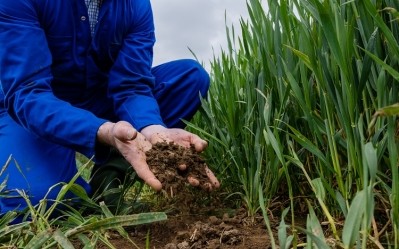How can alternative proteins and regenerative agriculture work together?

Regenerative agriculture and protein diversification both strive towards the development of a more sustainable food system, but in different ways. Regenerative agriculture aims to steer agricultural practices towards working in harmony with the land. Protein diversification aims to reduce meat consumption - linked to climate change - by presenting animal-free alternatives.
Despite their shared concern with sustainability, these two sectors have been opposed in the past, according to delegates on a panel at EIT Food’s Next Bite event in Rome, earlier this month. The two sectors now aim to get past their previous misunderstandings and work together for a more sustainable food system.
What are the misunderstandings between regenerative agriculture and protein diversification?
One of the reasons that distrust developed between the two sectors is, according to Elena Walden, senior policy manager at the Good Food Institute (GFI), the language used by the alternative protein sector. Walden felt that the language had implied all animal agriculture was harmful, which was misleading.
The language was unhelpful because it put regenerative agriculture, which aims to develop food sustainably, "in the same bucket as intensive systems," Walden told FoodNavigator. “That has made us be perceived as not on the same side, and I think it has been quite polarising.”
This language had the side effect of presenting the sector as a challenge to the existence of, rather than an ally to, farming communities.
Furthermore, suggested Walden, the protein diversification sector has not, historically, involved farmers enough in discussions of the issues at hand.
Robert Jones, vice president of global public affairs at Mosa Meat, agreed. He suggested that the language used by the alternative protein sector, which focused on how it had the potential to replace meat, was aimed at attracting venture capitalists (VC) but caused consumers and farmers, to view the sector with trepidation.
Farmers feel alienated from alternative protein, suggested Simon Kraemer, policy steward for regenerative agrifood systems at the European Alliance for Regenerative Agriculture (EARA). Kraemer, who works extensively with farmers as part of his role, believes that farmers view the sector as alienated from their lives.
“I think the perception is that it is driven by the interests of very very rich people who don’t care about local regions, or local farmers, or local food culture,” he told FoodNavigator.

Fundamentally, GFI’s Walden concluded, regenerative agriculture and protein diversification agree on the big picture; they just need to move past misunderstandings such as the ones presented here.
"Unhelpful language," she told FoodNavigator, has got in the way of people seeing that the two sectors "ultimately have the same goal".
How can they work together?
It is possible for the two sectors to work together. For example, Kraemer told us, they can collaborate on enabling farmers to practice regenerative agriculture. Most farmers are "very very far" from this, he told us.
The alternative protein sector also has a responsibility to mitigate the potential impact of their sector on farmers. If meat consumption is reduced, he told us, there will be less demand for crops that go into animal feed, and therefore the farmers growing these crops will get less money for them. It is the responsibility of the alternative protein sector, he told us, to prevent this from causing farmers to go bankrupt.
One way in which the regenerative agriculture sector could learn from protein diversification, he suggested, is in getting new capital into food system transformation.
In order to ensure a collaborative, rather than combative, relationship between the two sectors, GFI’s Walden suggested, it must be emphasised that protein diversification is "one part of the solution," rather than the be-all and end-all of sustainable food systems. “There are no silver bullets in the food system.”
She suggested, the sector should be more specific about the problems linked to animal agriculture, which, she told us, are caused by intensive, industrialised agricultural systems rather than regenerative agriculture.
Building on this more collaborative approach, the alternative proteins sector should work with farmers to find common policy goals that they can both aim towards. It also has the potential to help regenerative farmers in areas such as cover cropping.
One potential synergy is connected to space. While alternative proteins need less space for production than animal agriculture, regenerative agriculture needs significantly more than agriculture that doesn’t use regenerative methods. The two can complement each other.
Protein diversification can, she told us, learn from regenerative agriculture’s holistic and mindful approach to agricultural production.



















